Topics
These topics are in alphabetical order. You can also see a shortlist of my in-depth reviews which are also in the list below.
15 kHz Monitors - I've done a little research into multisync monitors that support 15 kHz and digital/analogue inputs which can support all the old PC graphics standards.
2D and 3D Graphics Card Technology - how things have changed over the years! Let's explore the journey from the start of the VESA VBE standards through to graphics acceleration and then to the 3D era.
3D Audio Games - a table of DOS games that provide support for the various 3D surround sound technologies available.
.jpg) 80386 Motherboard revival ! - A four-part article where we blow off the cobwebs and inject some life back into a 30-year old motherboard. This one is based on the Chips & Technologies CS8230 386 chipset with an early American Megatrends BIOS. I get it up and running, perform some performance tests on it, get it running faster, and play some games. Fun times!
80386 Motherboard revival ! - A four-part article where we blow off the cobwebs and inject some life back into a 30-year old motherboard. This one is based on the Chips & Technologies CS8230 386 chipset with an early American Megatrends BIOS. I get it up and running, perform some performance tests on it, get it running faster, and play some games. Fun times!
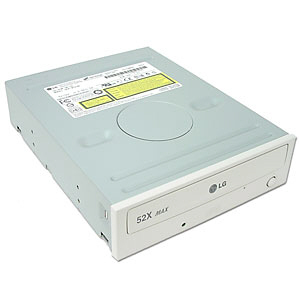 Advent of a New Media: CD-ROM - A history of the DOS PC "multimedia" era as it moved from magnetic to optical media. The CD-ROM revolutionised how we store and retrieve vast quantities of data - it led to a sea-change in gaming genres and 3D hardware.
Advent of a New Media: CD-ROM - A history of the DOS PC "multimedia" era as it moved from magnetic to optical media. The CD-ROM revolutionised how we store and retrieve vast quantities of data - it led to a sea-change in gaming genres and 3D hardware.
AGP and PCI Cards in DOS - A few tools and notes on DOS compatibility when using more modern PCI and AGP graphics cards.
ATI 3D Rage II - An in-depth look at this series of 3D accelerator cards that were prominent from 1996-1997. The 3D Rage II went up against nVidia's very first graphics card, the RiVA 128 and numerous other early 3D cards.
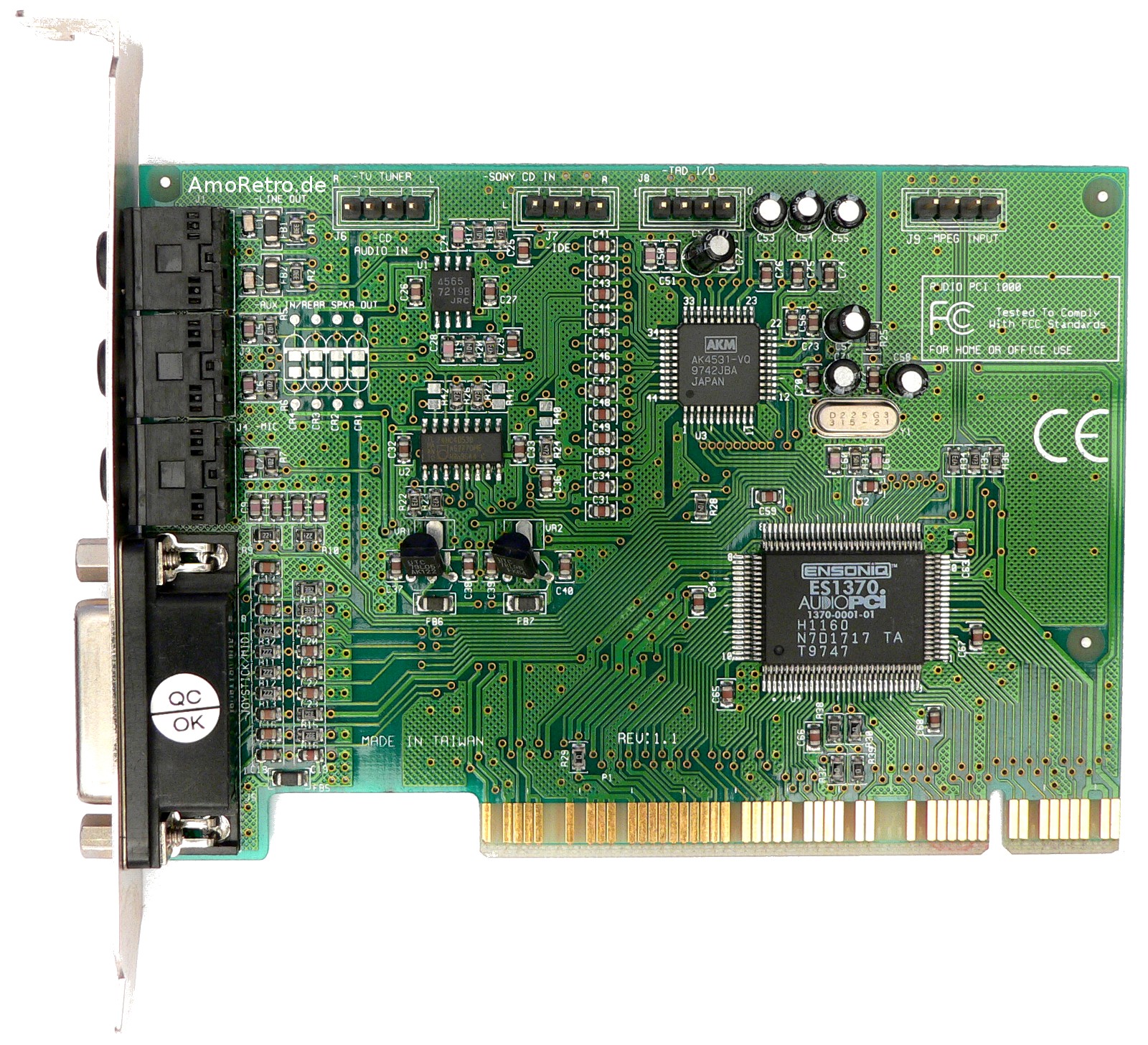 AudioPCI - an article that cover Ensoniq's excellent AudioPCI range of sound cards that provide excellent DOS compatibility on a PCI card, in addition to having a hardware synthesizer which uses your main system memory to store its instrument samples. It also covers Creative Labs' cards that use the same technology after their acquisition of Ensoniq.
AudioPCI - an article that cover Ensoniq's excellent AudioPCI range of sound cards that provide excellent DOS compatibility on a PCI card, in addition to having a hardware synthesizer which uses your main system memory to store its instrument samples. It also covers Creative Labs' cards that use the same technology after their acquisition of Ensoniq.
Aztech Sound Galaxy Nova 16 Extra Review - I take a look at this Sound Blaster Pro rival from 1994, with its five sound system compatibility!
 BASIC - A brief guide to the BASIC language interpreter that came on ROM (Cassette BASIC) with the IBM PC and XT, and how it evolved from that into QBASIC and GW-BASIC.
BASIC - A brief guide to the BASIC language interpreter that came on ROM (Cassette BASIC) with the IBM PC and XT, and how it evolved from that into QBASIC and GW-BASIC.
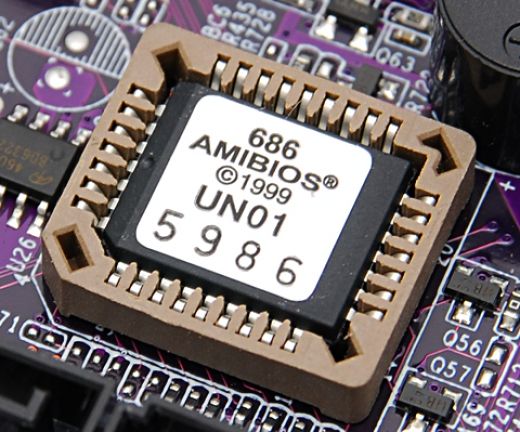 BIOS - An introduction to the PC BIOS, or Basic Input Output System. Included are descriptions of the various settings you'll find under the hood of your BIOS menus.
BIOS - An introduction to the PC BIOS, or Basic Input Output System. Included are descriptions of the various settings you'll find under the hood of your BIOS menus.
Building an MDA/CGA/EGA to VGA converter - this project is designed to be a super-cheap alternative to the off-the-shelf adapters that allow you to connect old MDA, Hercules, CGA and EGA cars to a 15-pin analogue RGB/VGA monitor.
Cache - A description of Level 1, Level 2, and Level 3 caches and what was used in each generation. As PC technology moved into faster CPUs like the 386, the need arose for faster access to memory - the answer was to have a cache on the motherboard for frequently-used instructions. Later this moved onto the CPU die itself.
.jpg) CGA Simulators - Don't have a colour graphics adapter, but want to play games? A lot of us were in this boat in the 80s, when the PC was still predominantly a business machine. In this article I look at the most popular CGA simulator utilities for Hercules graphics card owners - lots of [green]-screenshots and scores!
CGA Simulators - Don't have a colour graphics adapter, but want to play games? A lot of us were in this boat in the 80s, when the PC was still predominantly a business machine. In this article I look at the most popular CGA simulator utilities for Hercules graphics card owners - lots of [green]-screenshots and scores!
Chaintech 4SLE Retro Review - Also known as the IPC Family Magic, I review this late-486 ISA/VLB Socket 3 motherboard.
Compact Flash Card as a Hard Disk - replace your aging mechanical hard disk for something a little more solid state (and faster!)
CompuAdd Through the Years - The chronology of this household name through advertisements, it looks at their early days as a peripheral reseller through to its desktop and laptop PC range.
CPU Upgrade Options by Generation - Some information on how to get next-gen performance using your existing motherboard, I look at each generation of CPU and what can be done to eek out a little more juice rather than buying a whole new PC.
.jpg) Creating a DOS Gaming PC - A three-part article on the creation of my very flexible DOS gaming desktop, along with a bunch of game tests. Special thanks go to Phil at Phil's Computer Lab for his research in getting as much out of a fast retro PC as possible. With something like this, you can use a single PC to play games across a multitude of years of DOS and early Windows gaming. It's not without its shortfalls, and I welcome feedback from you on what you've built that tries to achieve the same.
Creating a DOS Gaming PC - A three-part article on the creation of my very flexible DOS gaming desktop, along with a bunch of game tests. Special thanks go to Phil at Phil's Computer Lab for his research in getting as much out of a fast retro PC as possible. With something like this, you can use a single PC to play games across a multitude of years of DOS and early Windows gaming. It's not without its shortfalls, and I welcome feedback from you on what you've built that tries to achieve the same.
Datasheets Index - An index page of all the datasheets I have on file here at DOS Days. Valuable for anyone looking for detailed information on the inner workings and implementation of a particular IC.
DOS 8.3 Filenames - An explanation of the filename length restrictions that exist in DOS.
DOS Driving Games - A four-part article looking at 38 of the best driving games for DOS over an 11 year period (from 1987 to 1998).
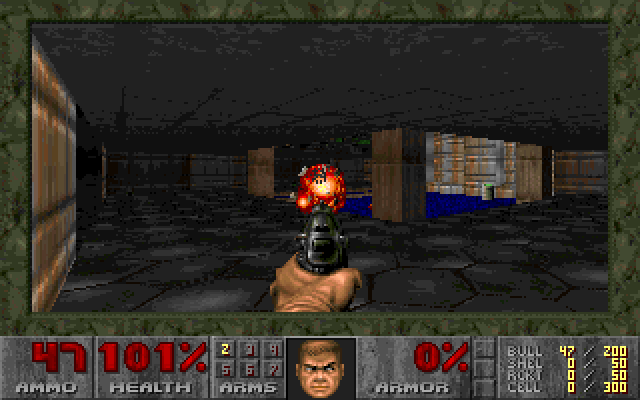 DOS Games - How to run DOS games on the original hardware. Use this and its linked pages as a "go to" guide to get your favourite games up and running again. Lots of game setup advice, copy protection information, minimum and recommended system requirements, where save games are stored, reviews, and more.
DOS Games - How to run DOS games on the original hardware. Use this and its linked pages as a "go to" guide to get your favourite games up and running again. Lots of game setup advice, copy protection information, minimum and recommended system requirements, where save games are stored, reviews, and more.
DOS Game Resolutions - A brief description of the various screen resolutions that were used in DOS games, including odd ones that may or may not be supported by all graphics cards.
DOS Laptops - Not everyone has the space for a big beige box and a heavy CRT to run old DOS applications or play old games. A laptop might be just the solution, but which one?
DOS Memory Management - All about XMS, EMS, the high memory area, upper memory area, and more!
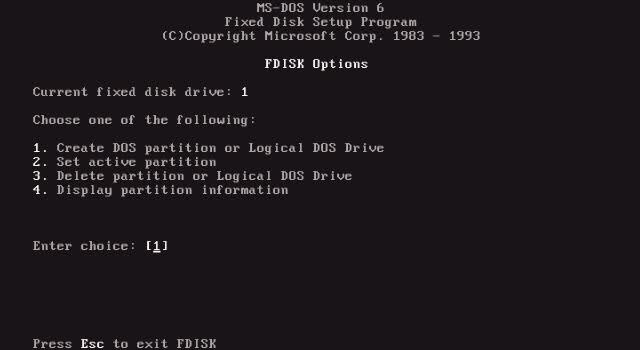 DOS Partitions and Logical Drives - An explanation of how hard disks are divided into chunks for use with DOS. I explore the early design of hard disks that put severe restrictions on retaining backward-compatibility while being able to make use of larger hard disks.
DOS Partitions and Logical Drives - An explanation of how hard disks are divided into chunks for use with DOS. I explore the early design of hard disks that put severe restrictions on retaining backward-compatibility while being able to make use of larger hard disks.
DOS Startup - A guide to the DOS startup process. Details of the Power-On-Self-Test (POST), through to bootstrapping and system configuration files, CONFIG.SYS and AUTOEXEC.BAT. Both IBM PC DOS and Microsoft MS-DOS are covered.
DOS History and Versions - Take a trip in the wayback machine to explore how DOS came to be, and check out the version history.
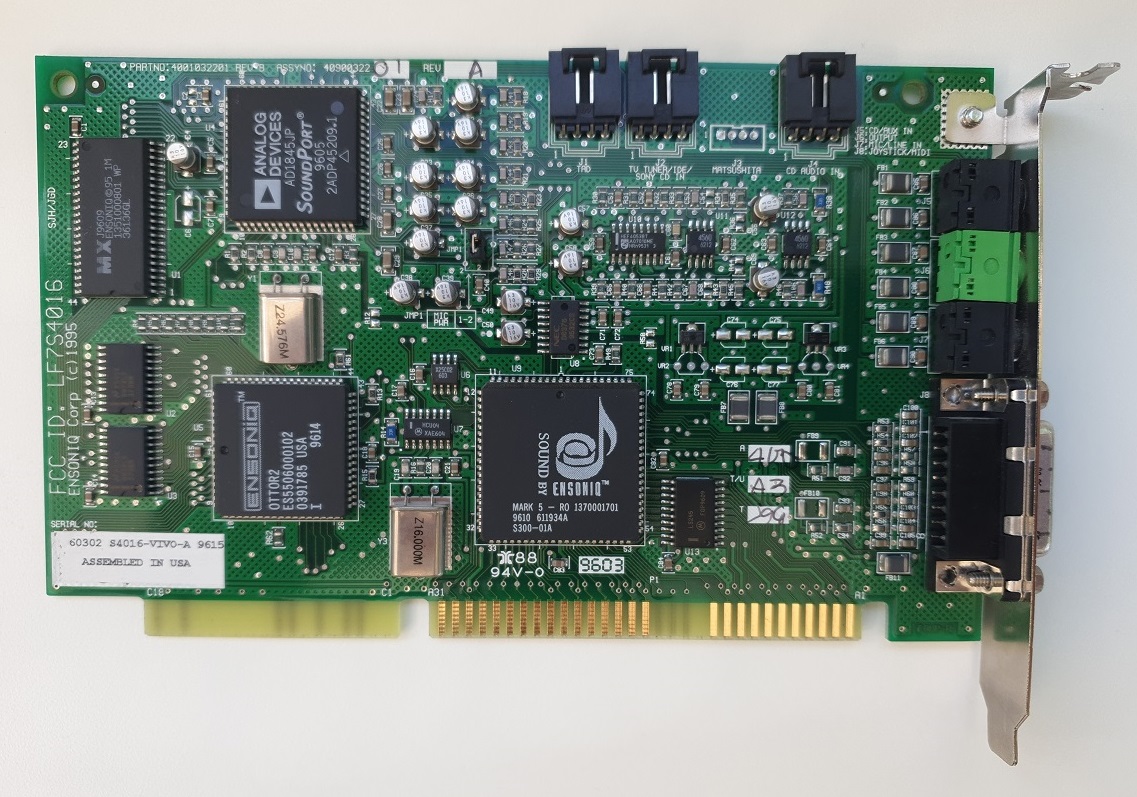 Ensoniq Soundscape VIVO / VIVO90 - A retro review of this interesting sound card from 1996. Today, it's an affordable option for any DOS retro gaming enthusiast, so does it deliver where it matters?
Ensoniq Soundscape VIVO / VIVO90 - A retro review of this interesting sound card from 1996. Today, it's an affordable option for any DOS retro gaming enthusiast, so does it deliver where it matters?
ESS Games - A table that shows all the games that directly support the vast array of audio chipsets from ESS.
.jpg) ET4000 Retro Review - A three-part review of the awesome Tseng Labs ET4000 SVGA chipset. I look at one of my video cards in particular, get it installed and running, and then play some games to assess its performance compared to the competition from Trident, Cirrus Logic, Paradise/Western Digital and more.
ET4000 Retro Review - A three-part review of the awesome Tseng Labs ET4000 SVGA chipset. I look at one of my video cards in particular, get it installed and running, and then play some games to assess its performance compared to the competition from Trident, Cirrus Logic, Paradise/Western Digital and more.
Extended and Expanded Memory on the 286 - 80286s were fun if wanted to use any memory above 640 KB! Each chipset in those days had their own device driver to cater for EMS and/or XMS. This article covers memory for the Headland HT12/A chipset.
Faraday FE2010A Chipset - An XT single-chip chipset in the last years of the XT-compatibles.
Faraday Micro PC - Exploring an FE2010A-based single board computer, circa-1986.
Fastest CPUs in Each Generation - A more condensed page to help you pick the best-performing CPU for your retro PC.
FAT (File Allocation Table) - Details about the DOS filesystem that is used to store files and directories on floppy disks and hard disks.
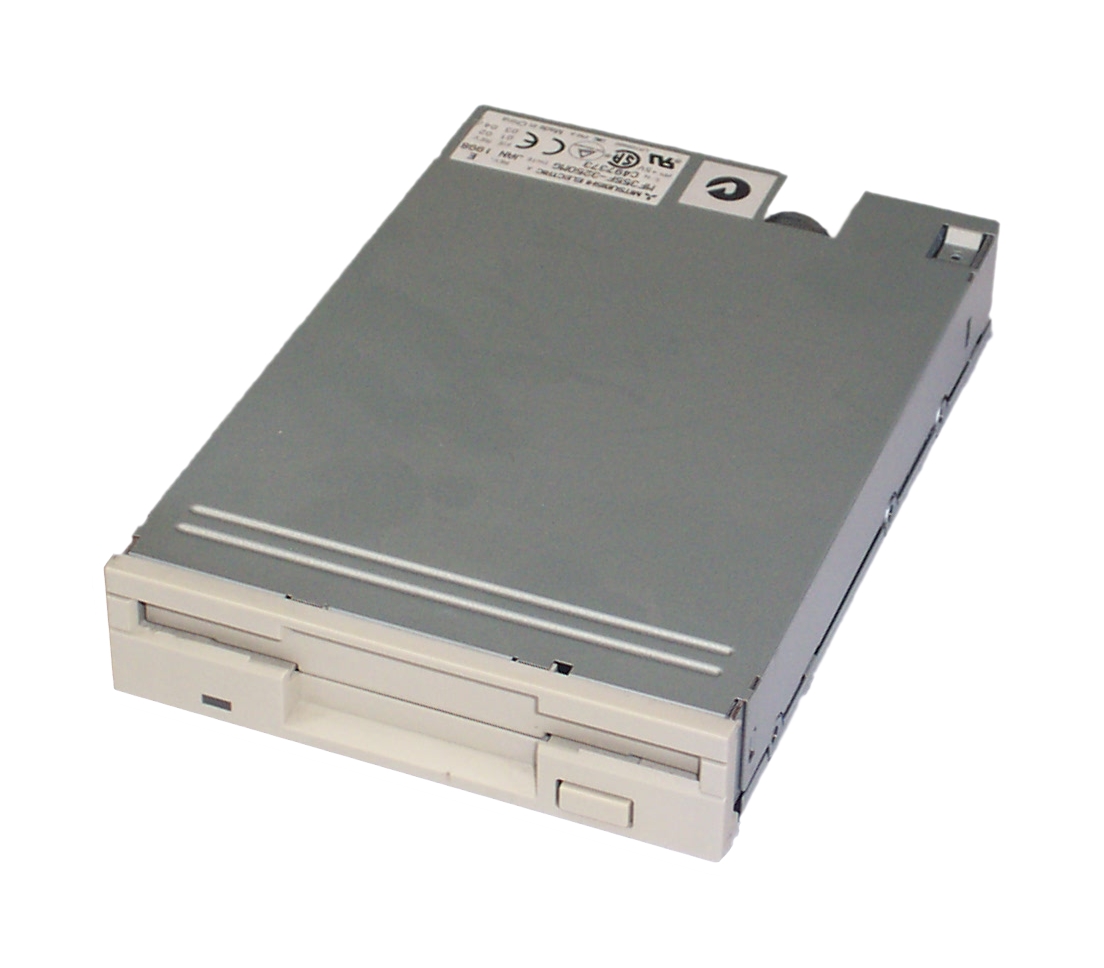 FIC 486-VIP-IO2 Motherboard Review - These motherboards from First International Computer were very popular in the early-to-mid 90s.
FIC 486-VIP-IO2 Motherboard Review - These motherboards from First International Computer were very popular in the early-to-mid 90s.
FIDA CGA/Hercules Retro Review - A three-part review of a bunch of these little ISA video cards.
Floppy Drives - A historical guide to the humble floppy disk drive - the various formats and capacities, popular brands, how the data is stored on the disk, understanding tracks and sectors, daisy-chaining, etc. There's also quite an extensive list of makes and models along with their specifications.
FM Synthesis Chips, Codecs and DACs - Information on the various ICs found on sound cards during the DOS era.
Front Side Bus - A brief explanation of a PC's front side bus.
Game Cracks - All about the types of copy protection and game cracking scene.
Get a 286 Running Like a 386 - I wanted to explore how far others have pushed the 286 platform, and continue this with my own findings. In this 4-part series, I make use of the faster 80286 CPUs from Harris Semiconductor, in conjunction with later 286 chipsets that supported faster clock speeds.
Gigabyte GA-686BX Motherboard Review - An Intel 440BX "Seattle" chipset-based motherboard for Pentium II CPUs.
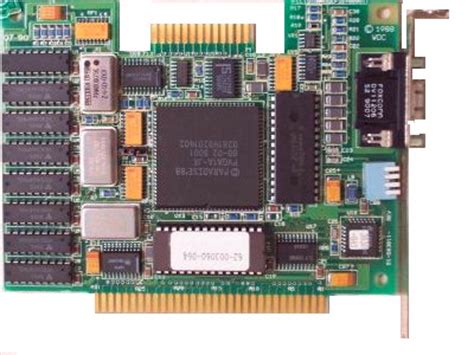 Graphics Cards - PC graphics card and display standards, plus information on multisync/multiscan monitors. This article talks about how performance of a graphics card changed from being CPU-centric to GPU. Want to know what a RAMDAC is? What was VESA? It's all in here. Read this in conjunction with the Monitors article further down for a complete picture :-o)
Graphics Cards - PC graphics card and display standards, plus information on multisync/multiscan monitors. This article talks about how performance of a graphics card changed from being CPU-centric to GPU. Want to know what a RAMDAC is? What was VESA? It's all in here. Read this in conjunction with the Monitors article further down for a complete picture :-o)
Graphics Features - This is my attempt to understand some of the terminology used in the world of gaming graphics.
Hard Disks - A historical guide to hard disk drives, the encoding methods used to store data, and approximate hard disk capacities throughout the DOS time period. This article also discusses the limits imposed by BIOS, the ATA interface, and operating system, which can prevent the use of larger capacity hard disks on older PCs.
History of DOS - An account of how various flavours of the venerable Disk Operation System came to be.
HT12 XMS and EMS - A short article on getting extended and expanded memory operational on the Headland HT12 chipset.
I/O Addresses, IRQs and DMA Channels - What these mean and how to avoid hardware conflicts in your PC.
Intel Chipsets - A detailed look at the range of Intel chipsets used on PC motherboards.
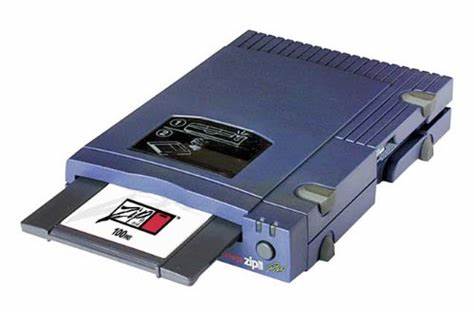 IoMega Drives - The company that brought us the ZIP drive and many other storage innovations. In part 1 I explore the background and the rise of the ZIP 100 floppy disk replacement. In part 2 my focus is turned to the Jaz and Ditto drives. And in the final part (still to come), I will cover the Clik!
IoMega Drives - The company that brought us the ZIP drive and many other storage innovations. In part 1 I explore the background and the rise of the ZIP 100 floppy disk replacement. In part 2 my focus is turned to the Jaz and Ditto drives. And in the final part (still to come), I will cover the Clik!
Laptop Displays - A delve into the murky world of laptop display technology.
Math Coprocessors - They could have been so good for the DOS PC, if they were used.
Media Vision Jazz Chipsets - A bit of information on the successors to MV's ProAudio Spectrum cards.
Media Vision ProAudio Spectrum 16 - A full review of my PAS16 card - the very first card for the PC that supported 16-bit audio!
Memory - An account of the various memory technologies used in personal computers.
MicroProse - A three-part article that explores this famous gaming company through the years.
 MIDI - Answers questions such as "What is MIDI?" and "Why do I need it?". Details of MIDI support in PCs and compatibles, including pre-MIDI sample-based audio from the likes of Roland's MT-32, how to connect MIDI devices to your PC, and the capabilities certain MIDI devices have. This article also includes an extensive list of hardware and software (mostly games) that use MIDI.
MIDI - Answers questions such as "What is MIDI?" and "Why do I need it?". Details of MIDI support in PCs and compatibles, including pre-MIDI sample-based audio from the likes of Roland's MT-32, how to connect MIDI devices to your PC, and the capabilities certain MIDI devices have. This article also includes an extensive list of hardware and software (mostly games) that use MIDI.
MIDI With DOSBox - Instructions on how to configure your physical MIDI hardware to work with DOSBox on a modern PC, so you don't have to emulate.
MT-32 Game Compatibility - Covers details of each game that directly supports the Roland MT-32, and whether they need an intelligent mode MPU-401 interface and if so, do they work with SoftMPU?
MultiWave AudioWave 16 - An in-depth look at this interesting sound card from 1993 that has both a MediaVision Thunder Board chipset and a Yamaha OPL3.
My Amstrad PC Stuff - For many of us in the UK, the Amstrad PCs were quite special and probably our first experience of a PC.
My CPU Collection - A page that I use to catalogue the CPUs in my collection.
My DOS Gaming PC - A three-part article on the creation of my very flexible DOS gaming desktop, along with a bunch of game tests.
My Graphics Cards - A page that I use to catalogue the graphics cards in my collection.
My Sound Cards - A page that I use to catalogue the sound cards in my collection.
My Memory Modules - A page that I use to catalogue the memory chips and modules in my collection.
NEAT Chipset - The New Enhanced AT chipset was a first in several ways. It launched the philosophy of having tight integration of components on groups of dedicated chips (these days called a chipset), as well as the first BIOS firmware programs used to configure the PC.
Networking in DOS - I use a variety of network cards (both ISA and PCI) along with packet drivers and a handy TCP/IP stack called mTCP to connect a couple of retro DOS PCs to my network [and from there to the Internet!]
Octek DCS-286 Motherboard review - A 3-part deep dive with this G2 chipset-based 286 motherboard from 1988.
Octek EVGA-16 SVGA card review - An in-depth look at this VGA card from 1991.
Octek MicroEGA (VC001 Gemini chipset) EGA card review - I put this flexible Super-EGA card through its paces.
OPTi 386/486 Hybrid Motherboard Review - I investigate the capabilities of this OPTi-chipset board I picked up in March 2021.
Orchid Fahrenheit VA/VLB Retro Review - An article that explores this decent SVGA card.
Orpheus 1 Sound Card Review - A two-part article that looks at this modern take on a DOS sound card.
Osborne 1 Retro Repair - Not a DOS machine, as it pre-dated the IBM 5150 by a few years, but this was donated to me and was DOA, so I thought I'd explore and see what I could get working.
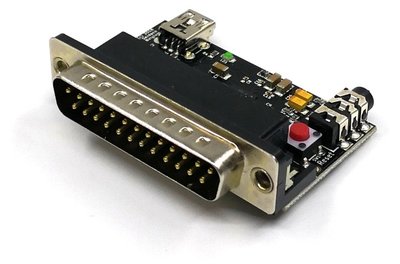 Parallel Port Sound Cards - I recently ordered the parallel port sound card bundle from Serdashop, so I've done a bit of background digging on these and older parallel port sound hardware. Once the items arrive I'll do a full review.
Parallel Port Sound Cards - I recently ordered the parallel port sound card bundle from Serdashop, so I've done a bit of background digging on these and older parallel port sound hardware. Once the items arrive I'll do a full review.
PC Booters - A list of the known PC Booter games. Also check out the Game Cracks page!
PC Buses Explained - A summary of the various buses found on PC motherboards.
PC Chips M590 Retro Review - I take a look at this Super Socket 7 motherboard.
PC Prices in 1982 - An attempt to catalogue typical prices of PCs and components in 1982.
PCI Sound Cards in DOS - A look at how PCI sound cards worked in pure DOS, including the use of DDMA and SBLINK.
ProAudio Spectrum Games - A list of the games that directly supported the Media Vision PAS sound card range.
RAM Disks - Want a temporary super-fast hard disk? This article covers how to setup a RAM drive in DOS.
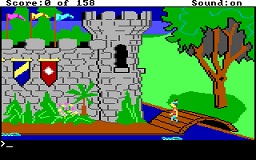 Sierra AGI - Take a walk down memory lane as I explore Sierra's iconic Adventure Game Interpreter and the games that were built using it. The article covers not only the AGI itself, but also has a bunch of third-party tools and utilities you can download to create your own.
Sierra AGI - Take a walk down memory lane as I explore Sierra's iconic Adventure Game Interpreter and the games that were built using it. The article covers not only the AGI itself, but also has a bunch of third-party tools and utilities you can download to create your own.
Sierra SCI - A look at the successor to AGI, the Sierra Creative Interpreter, and the games that used it. Includes third-party tools and utilities for download.
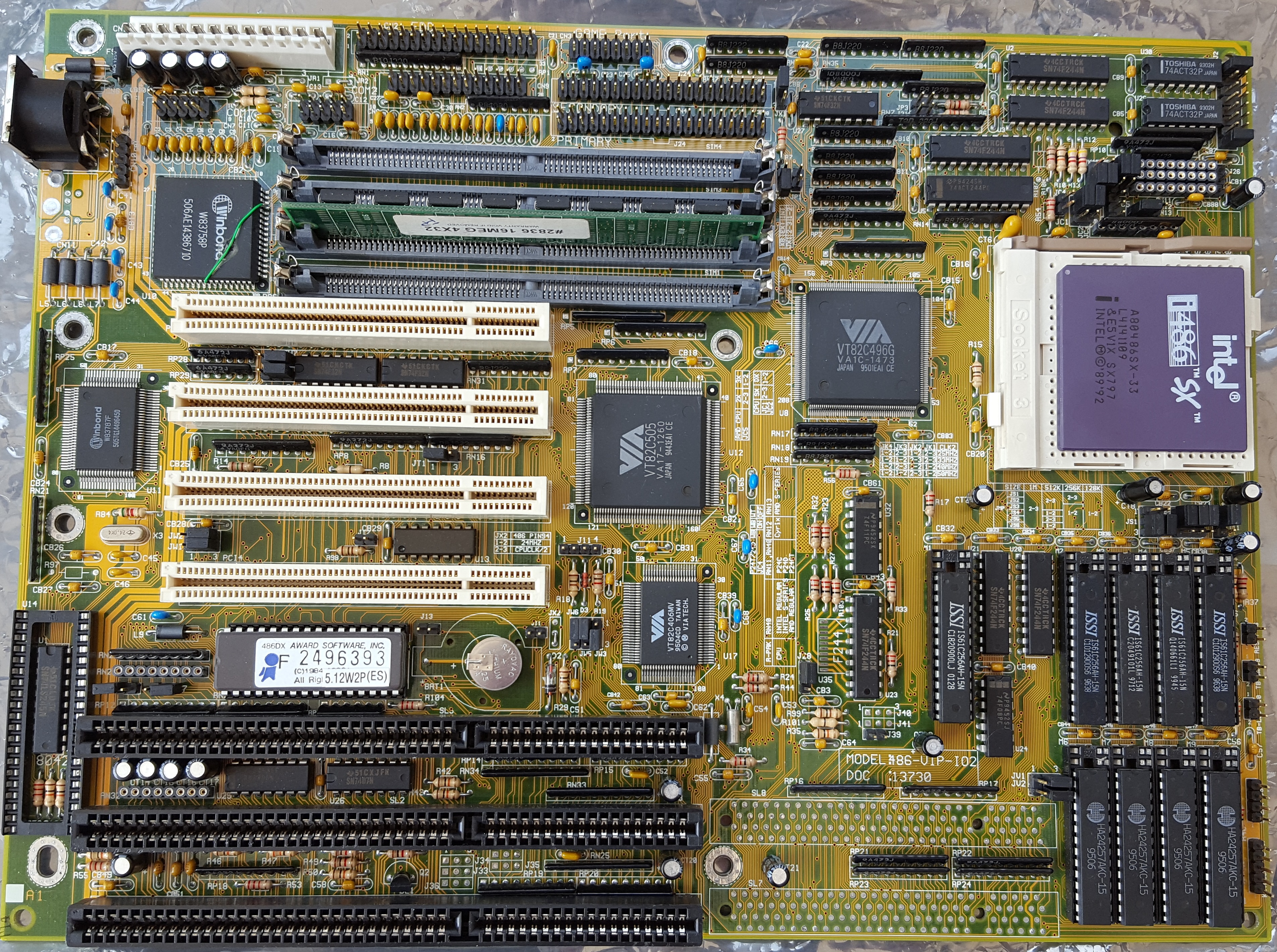 Socket 3 Motherboard Review - An interesting mainboard from early 1995, the FIC 486-VIP-IO2 has support for ISA, VLB and PCI. It supports up to 1 MB of L2 cache and up to 128 MB of memory. I test this out using a variety of CPUs ranging from a 486SX-25 up to the mighty Cyrix 5x86 and AMD X5-133.
Socket 3 Motherboard Review - An interesting mainboard from early 1995, the FIC 486-VIP-IO2 has support for ISA, VLB and PCI. It supports up to 1 MB of L2 cache and up to 128 MB of memory. I test this out using a variety of CPUs ranging from a 486SX-25 up to the mighty Cyrix 5x86 and AMD X5-133.
Socket 7 and Super Socket 7 - the best platform for DOS gaming!
Software Wavetables - wavetable instruments you can swap out!
Sound Blaster 16 Value Review - This began as a review of the Creative Labs Sound Blaster 16, model CT2770. It turned into a much larger audio comparison project!
Sound Blaster 16 on an XT or 286 - Some tricks and utilities to getting a very cheap but good sound card running on 8-bit and early 16-bit PCs.
Sound Blaster AWE Range and Alternatives - A brief look at the AWE32, AWE64 and Sound Blaster 32 cards, and why they're perhaps not the best choice for retro PC gamers. I offer some alternatives that achieve better results.
Sound Blaster Pro 2 Review - An in-depth retro review on the first model in the Creative Labs SBPro 2 range, the CT1600.
 Sound Cards - A list of sound cards and their manufacturers. This article will hopfully be useful for anyone trying to identify an unknown sound card, or is looking to buy one but doesn't know the specifications. Where appropriate, I've also included anecdotal comments on the quality of the cards, for what they're worth.
Sound Cards - A list of sound cards and their manufacturers. This article will hopfully be useful for anyone trying to identify an unknown sound card, or is looking to buy one but doesn't know the specifications. Where appropriate, I've also included anecdotal comments on the quality of the cards, for what they're worth.
TSRS - Terminate and Stay Resident programs - What are they and how do they work?
Typical PCs per Year - A look into what a typical PC looked like each year, what components were provided as standard including hard disk sizes, graphics capability, monitor sizes, bundled software and so on. I've done some background research into typical new prices of PCs and their peripherals, which is an interesting read (I think).
 USB Support in DOS - Yes, by using an AHCI driver you can access USB drives from DOS! It's easy to setup, and you can download everything you need from here. This is for "mass storage" devices only (meaning USB stick/key/pen drive). It won't work for USB printers, USB sound cards, USB floppy drives or CD-ROMs.
USB Support in DOS - Yes, by using an AHCI driver you can access USB drives from DOS! It's easy to setup, and you can download everything you need from here. This is for "mass storage" devices only (meaning USB stick/key/pen drive). It won't work for USB printers, USB sound cards, USB floppy drives or CD-ROMs.
Using VGA on a Modern Display - A comparison of two cost-effective converters/scalers for VGA to DVI/HDMI - the Gefen EXT-VGA-2-DVISP and the Extron RGB-HDMI 300 A.
Virtualising DOS - I run a variety of productivity software on three of the most common DOS emulators: DOSBox, vDosPlus, and VirtualBox, to see how they fared.
Viruses - I dig into early computer viruses and the anti-virus programs used to remove them.
Voodoo-Supported Games - A list of games that directly support the 3dfx GLiDE graphics API. This list is a work in progress.
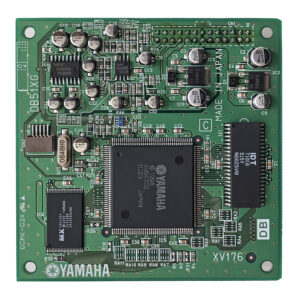 Wavetable Synthesis - A deep dive into the murky world of the wavetable audio. This large article explores all the wavetable daughterboards I could find information on, the quality of their sampled synth audio output, and compatibility with sound cards.
Wavetable Synthesis - A deep dive into the murky world of the wavetable audio. This large article explores all the wavetable daughterboards I could find information on, the quality of their sampled synth audio output, and compatibility with sound cards.
Windows Sound System - A page dedicated to the Microsoft Windows Sound System spec, the card, the software and drivers, plus downloads.
XT and AT Keyboards - We go through the differences and how they signal.
XT Clone Restoration Project - Bringing together all the bits that made up my very first PC and restoring it to its original glory, this 3-part article is for all you early DOS fans!
XTA or 8-bit IDE - An early IDE format for 8-bit PCs?
Yamaha Audician 32 Plus Review - A three-part in-depth review of this popular ISA sound card.